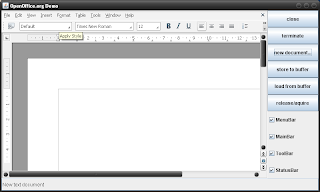The @Debt annotation can be used in Java 6 or above to measure in code instances of technical debt. If a configurable threshold is exceeded then the build will fail.
It is intended to be used by both developers and dev leads. The number one use case is the situation when expediency has driven you to make a design or implementation decision which you are not 100% happy with. Normally you will moan to yourself quietly, write the less-than-pretty code, and move on. If you are lucky you will remember the exact position where this trade-off was cast in stone; but probably you will not. Then in the future, you hit the problem again, and again there is no time to put in a "nicer" implementation. You grumble again, and move on. If only there was a way to mark all the occurrences of this technical debt, and to indicate every time it later causes you real development pain.
The @Debt annotation lets you do this. Now, when you make the concession, you quickly add the "@Debt" to the member in question (adding a quick description string and set the counter to "1") and move on. Later on, when you hit it again, you just increment the counter. Meanwhile, behind the scenes, at every build you are automatically trawling through your codebase and crunching all this debt and keeping a track of it. How debt-ridden is a given part of your code? Now more than relying on smells alone, you can have a look at the @Debt output and have a real idea.
But beware! You need to be disciplined in your marking and updates of your @Debt trackers. Otherwise it's as useless as thoise unit tests which now fail so you switched off. You have been warned!
Get it here: http://kenai.com/projects/csdutilities/downloads







